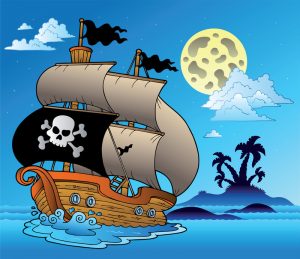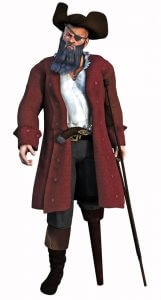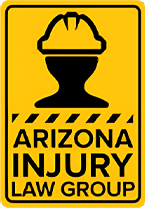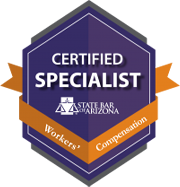What Do Pirates and Arizona Workers Compensation System Have in Common?

Q: What do Pirates and the Arizona Workers’ Compensation System have in common?
A: A “schedule” for compensation of permanent injuries

Believe it or not, a written “schedule” for compensating an injured worker for the loss of a specified body part is nothing new. Pirate ships had such schedules hundreds of years before Arizona. In his book Empire of Blue Water by Stephan Talty, the author discusses how Henry Morgan, an infamous pirate ship captain, adopted articles of operation for his voyages dating back to the 1600’s.
Articles of operation for pirate ships were not uncommon and included rules of procedure for the taking of prisoners, the settlement of disputes, and compensation to be paid to the pirates. However, from the perspective of a workers’ compensation practitioner, the most interesting part of the pirate ship articles was the adoption of a “schedule” of compensation for the loss of a body part in the course and scope of the business of the pirate ship. Mr. Talty recounts:
The most extraordinary clauses in the articles were the ones addressing the “recompense and reward each one ought to have that is either wounded or maimed in his body, suffering the loss of any limb, by that voyage.” Each eventuality was priced out:
Loss of a right arm: 600 pieces of eight
Left arm: 500
Right leg: 500
Left leg: 400
Eye: 100
Finger: 100
The Morgan ship’s schedule can be compared to the Arizona Workers’ Compensation Act’s award scheme for scheduled impairment as follows:
Loss of a “major” arm: 60 months
Loss of a “minor” arm: 50 months
Right leg: 50 months
Left leg: 50 months
Eye: 30 months (by enucleation)
Eye: 25 (loss of sight without enucleation)
Finger: 15 months (thumb)
9 months (first finger “index”)
7 months (second finger)
5 months (third finger)
4 months (fourth finger “little finger”)

A “piece of eight” was a one ounce Spanish silver coin that was valued at eight Spanish “reales.” It could be fractioned into halves or quarters much like we do with modern dollars. According to the BBC, one coin would have been worth the equivalent of a modern British 50 pound note. http://www.bbc.co.uk/ahistoryoftheworld/objects/JO391t6cRtGxstjbE4EEmg
As of this blog the British pound conversion rate is 1.2932 to 1 U.S. dollar. That would make the pirate fee schedule of 500 pieces of eight for loss of a leg worth the equivalent of $32,330. Utilizing a pre- “Brexit” conversion value for the British pound would place the value of 500 pieces of eight a bit higher.
It’s interesting to note that the pirate ship’s schedule placed a higher value on the right leg compared to the left leg whereas the modern Arizona schedule makes no differentiation. Perhaps this has something to do with the poor quality of pirate era prosthetics and the impact that a missing right leg would have on a pirate’s efficiency during sword fights. Also, the Arizona schedule differentiates between enucleation (removal) of the eye and the simple loss of sight whereas the Morgan schedule has a flat rate regardless of whether to eye itself was removed. The Morgan schedule was also primitive in that it didn’t recognize the relative functional importance of say a thumb compared to a little finger.

Mr. Talty further noted that pirate ship articles included “supportive care” such as provision for a wooden peg leg which was of great value to a pirate. If the swashbuckling movies of Hollywood (like Treasure Island) were at all accurate, the pirate ships codes also apparently contemplated the provision of a cool eye patch and/or a shoulder parrot to complement the pieces of eight awarded for the loss of a leg or an eye (insert laugh here).
All in all, it’s quite impressive that pirate ships codified a system of compensation for injured workers in the 1600’s whereas such systems didn’t take hold in the U.S. legal system until centuries later (Arizona didn’t develop a workers’ compensation system until the early 1900’s).
Conclusion: pirate ships were ahead of their time and offered a cutting edge, progressive, and pro-worker system of compensation for injured workers.
The top Arizona workers’ compensation attorneys are with Montrose and Chua. No retainer required and a complimentary consultation is offered, call us today!
Get Help Today
Call Immediately For A Free, No Obligation Consultation And Let Us Help You Put Your Life Back On Track. Let Us Help You
Regain Normalcy And Stability Again. We Want To Help You Get The Benefits You Need And Deserve!


